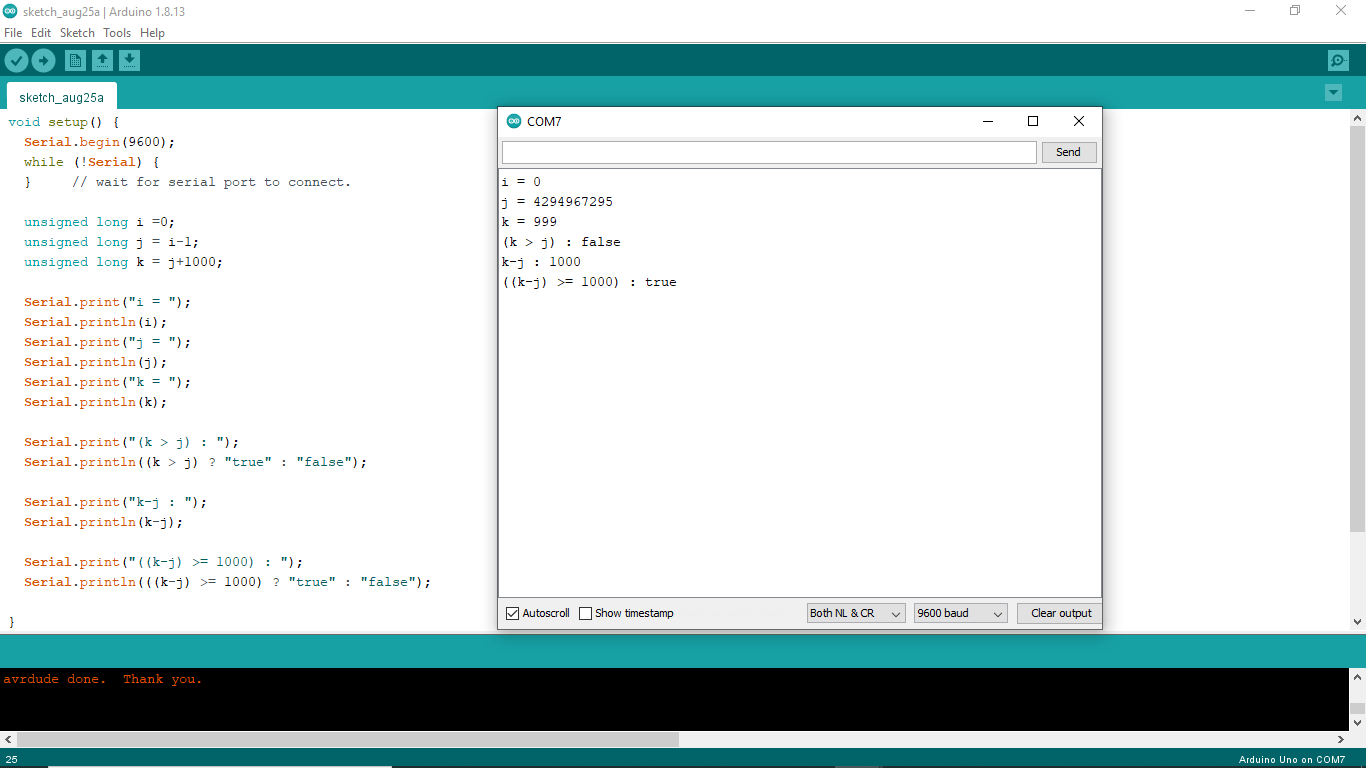
- #ARDUINO MILLIS MAX VALUE HOW TO#
- #ARDUINO MILLIS MAX VALUE SERIAL#
- #ARDUINO MILLIS MAX VALUE SOFTWARE#
- #ARDUINO MILLIS MAX VALUE CODE#
#ARDUINO MILLIS MAX VALUE SERIAL#
There are a number of different PWM patterns already programmed into the code, what I'd like to do is be able to assign more than one device to a single pattern, and start/stop the patterns at different times to different devices. Arduino serial buffers have limited memory to store data in case if the memory overflows or large amount of data is there at the serial pin, we have to. I tryied to print the numbers using different interval times (eventTime_1 and eventTime_2), but it didn't work.I'm working on a project where I could have up to six devices connected to an arduino, it might be the case that not all of them will be attached at the same time, and all of them need to be able to receive PWM signals but without using delay(). If this is the post you're referring to, then I'll take that as high praise indeed.
#ARDUINO MILLIS MAX VALUE HOW TO#
Sounds obvious, right You are learning how to use Arduino to build your own projects Check out Arduino For Beginners and learn step by step. crimony: retrolefty: There was a 'famous' posting here in the past explaining how the subtraction overflow bit handles the roll over condition just fine as long as you use subtraction for your time interval test calculation.
#ARDUINO MILLIS MAX VALUE CODE#
This code problem is a part of bigger project. How to solve the overflow issue millis () and micros () inside interrupts When to use Arduino millis () vs micros () Time resolution You get a 1 millisecond resolution for the millis () function. Millis returns the number of milliseconds that have passed since this upload was completed. In other words, when you upload your sketch to your Arduino, as soon as the upload is complete, the clock starts. I could use delay function, but i want to use millis function, because i don't want to block the code using delay in loop. The millis function returns the number of milliseconds that your Arduino board has been powered up. Under the hood, the variable for millis () is of type unsigned long, which is 32 bits on the Arduino. For example, a 4 digit tally counter returns to zeros after 9999. Any counter with a limited number of digits eventually returns to zero.

I'm trying to print in Serial screen the number 1 - 6, ONE number every 5 seconds (I'm trying only with number 1 and number 2 for smaller and easier to undestand and modify code). 1 Answer Sorted by: 25 It is not an exclusive property of millis (). Please note: this solution is affected by the Overflow. This number will overflow (go back to zero), after approximately 50 days.


At first, you might be thinking, well that’s not very useful But consider how you tell time during the day. Description Returns the number of milliseconds passed since the Arduino board began running the current program. This function returns the number of milliseconds the current sketch has been running since the last reset. In the requirements, it says: 'Time does not require any special hardware.Internally, Time depends upon Arduinos millis() function to keep track to elasped time.'. Searching on the Internet, I found these lybraries 'Time.h' and 'TimeAlarms.h'.
#ARDUINO MILLIS MAX VALUE SOFTWARE#
I don't know if someone else asked this before. println (millis (), obtaining a printout of the value on the terminal. The millis () function is one of the most powerful functions of the Arduino library. Im developing a arduino based system, which includes a alarm system. //pwm-with-millis.ino // macros for LED state define ON true define OFF false // variables for pattern timing unsigned long currentMillis millis() unsigned long previousMillis 0 unsigned long millisInterval 100 // variables for software PWM unsigned long currentMicros micros() unsigned long previousMicros 0 // this is the freque.


 0 kommentar(er)
0 kommentar(er)
